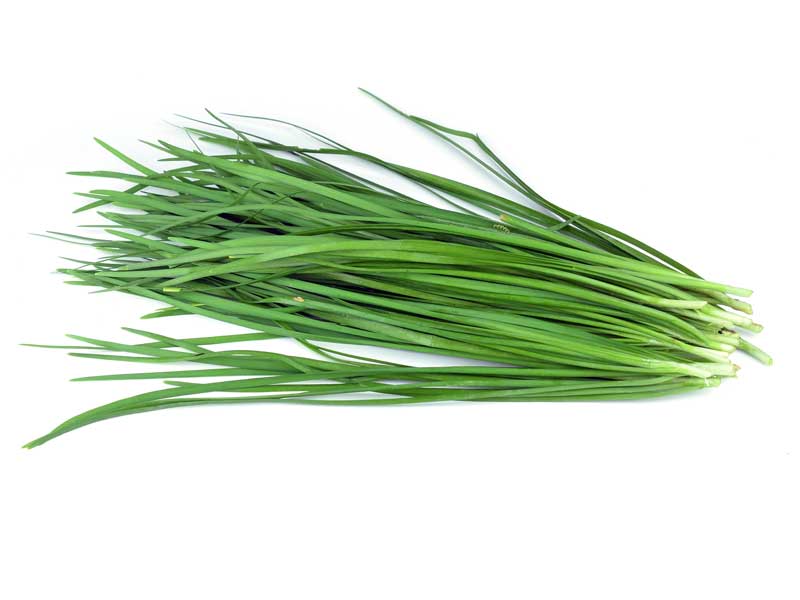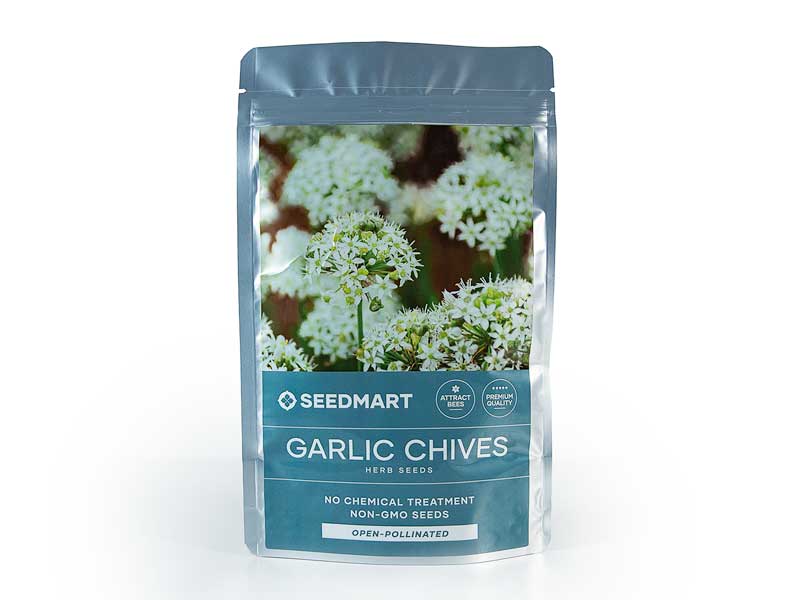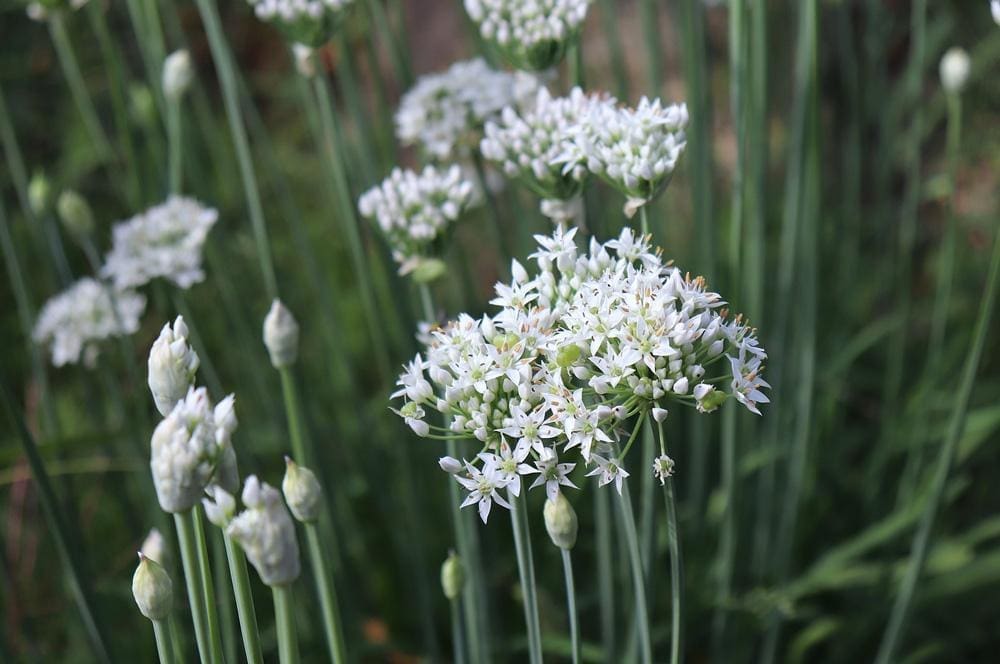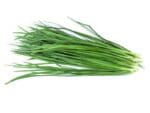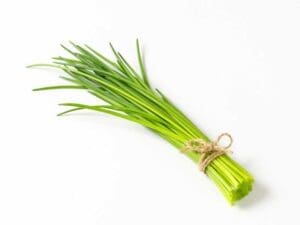HERB ‘Garlic Chives’ Seeds – Herbs & Microgreens
Botanical Name: Allium tuberosum
Common Names: Garlic chives, Chinese chives, kau tsoi
Family: Alliaceae
What are Garlic Chives?
Garlic chives, scientifically known as Allium tuberosum, are perennial herbs that form dense clumps of grass-like leaves, typically reaching a maximum height of 25 cm. Each bulb yields 4 to 5 leaves and are flat, measuring approximately 0.5 cm in width.
These herbs produce flat-headed sprays of star-shaped white flowers with a subtle, sweet scent. Chinese chives are not only easy to cultivate but adaptable to a variety of soil conditions.
Culinary Uses
Unlike garlic or onion, garlic chives do not have an edible bulb. Instead, the edible parts include its flat leaves and white flowers. The flavour is milder than regular garlic, making it a popular choice for egg & fish dishes. Chop the leaves up finely and add to sauces, soups, salads, stir-fries or use as a garnish. Add chives during the last part of your cooking, as overcooking may cause them to become fibrous. The flower buds are edible and can be used as a garnish or added to Asian cuisine.
Ornamental Uses
Garlic chives are a pretty, decorative edging plant that complements herb and vegetable gardens. The petite, white, star-shaped flowers suit cottage or traditional gardens.
Plant Details
- Plant Type: Perennial herb
- Plant Height: 25 cm
Sowing Information
- Recommended Planting Time:
- Temperate: September – November, March – May
- Subtropical: March – May, September – November
- Tropical: Year-round
- Arid: March – May, September – November
- Cool: September – November, March – May
- Germination: Best germination occurs at soil temperatures between 18°C and 22°C
- Depth: Cover seeds with approximately 1–2 cm of soil
- Position: Sunny to partially shaded location
- Sow Where: Start seeds indoors during colder months and transplant outdoors when warm; or direct sow into the garden
- Soil Type: Well-drained, fertile soils (adaptable)
- Spacing: Space plants approximately 20 cm apart
Growing Tips
- To divide clumps, trim the tops of the chives, gently lift the clumps, trim the roots, and separate the rhizomes. Rhizomes can be replanted.
- Regular division, preferably every two years, will enhance the vigor of the clump.
- Avoid allowing the plants to set seed unless you intend to save seeds, as this can reduce the clump’s vigor.
Harvest
Garlic chives can be harvested once the leaves are long enough to cut, approximately 8–10 weeks after planting. For best results, cut only a few leaves from each plant at a time to allow the plant to continue growing.
Click here to find out more about growing and using Garlic Chives.

